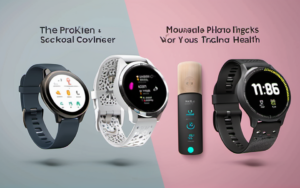Smart gadgets have revolutionized the way we live, work, and interact with the world around us. But beyond their convenience, these devices hold immense potential for improving accessibility and enhancing the lives of individuals with disabilities.
Smart Gadgets: A New Era of Accessibility
The rise of smart gadgets has ushered in a new era of accessibility, offering a wide range of assistive technologies that empower individuals with disabilities to live more independently and engage with the world in meaningful ways.
The Rise of Assistive Technology
Assistive technology (AT) has been around for decades, providing individuals with disabilities with tools and devices to overcome functional limitations. However, recent advancements in technology, particularly in the realm of smart gadgets, have significantly expanded the scope and impact of AT.
The Role of Smart Gadgets in Accessibility
Smart gadgets leverage cutting-edge technologies like artificial intelligence (AI), sensor networks, and internet connectivity to deliver personalized and adaptive solutions for accessibility challenges. From voice-controlled devices to smart home automation, these gadgets offer a wide array of options for enhancing independence, safety, and quality of life.
Smart Gadgets for Vision Impairment
Individuals with vision impairment can benefit significantly from smart gadgets designed to enhance their daily lives.
Screen Readers and Voice Assistants
Screen readers are software programs that read aloud the text displayed on computer screens, smartphones, and other digital devices. Popular screen readers like JAWS and NVDA allow users to navigate websites, read emails, and access digital content without the need for visual input. Voice assistants like Siri, Google Assistant, and Alexa can be used for a wide range of tasks, including setting reminders, making calls, and controlling smart home devices.
Smart Glasses and Augmented Reality
Smart glasses equipped with augmented reality (AR) technology can provide individuals with visual impairments with real-time information about their surroundings. These glasses can identify objects, read signs, and guide users through unfamiliar environments.
Smart Gadgets for Hearing Impairment
Smart gadgets are playing a crucial role in empowering individuals with hearing impairment to participate fully in society.
Hearing Aids and Cochlear Implants
Hearing aids and cochlear implants are sophisticated devices that amplify sound and provide individuals with hearing loss with access to auditory information. Modern hearing aids utilize advanced digital signal processing and Bluetooth connectivity to provide clear and personalized sound amplification.
Captioning and Transcription Services
Smart gadgets can provide real-time captioning and transcription services for individuals with hearing impairment. These services can be used for live events, video calls, and general communication, ensuring that everyone can participate in conversations and access information.
Smart Gadgets for Mobility Challenges
Smart gadgets are transforming the way individuals with mobility challenges navigate their environment and interact with the world.
Smart Wheelchairs and Mobility Aids
Smart wheelchairs and mobility aids integrate advanced technologies like GPS, sensors, and AI to provide users with greater control and independence. These devices can navigate complex environments, avoid obstacles, and even assist with daily tasks like opening doors and controlling smart home appliances.
Smart Home Automation
Smart home automation systems allow individuals with mobility challenges to control lighting, temperature, and appliances using voice commands or smartphone apps. This technology can enhance safety and independence, allowing individuals to live more comfortably and independently in their homes.
Smart Gadgets for Cognitive Impairment
Smart gadgets can provide individuals with cognitive impairment with support and assistance in managing daily tasks, enhancing memory, and promoting cognitive health.
Memory Aids and Cognitive Training Apps
Memory aids and cognitive training apps can help individuals with cognitive impairment improve their memory, focus, and overall cognitive function. These apps offer a variety of exercises and games designed to stimulate the brain and enhance cognitive abilities.
Smart Home Security and Safety Features
Smart home security and safety features can provide peace of mind for individuals with cognitive impairment and their families. These features include motion sensors, fall detection systems, and smart door locks that can alert caregivers in case of an emergency.
Challenges and Considerations
While smart gadgets offer significant benefits for accessibility, several challenges and considerations remain.
Privacy and Data Security
The use of smart gadgets raises concerns about privacy and data security. It’s crucial to ensure that personal data collected by these devices is handled securely and responsibly.
Accessibility and Inclusivity in Design
Smart gadgets should be designed with accessibility and inclusivity in mind. Features like voice control, large font sizes, and high-contrast displays are essential for ensuring that these devices are usable by individuals with diverse abilities.
Cost and Affordability
The cost of smart gadgets and assistive technologies can be a barrier for some individuals with disabilities. Governments, organizations, and businesses should work to make these technologies more affordable and accessible to everyone.
The Future of Accessibility
The future of accessibility is bright, with ongoing advancements in technology leading to even more innovative and impactful solutions.
Advancements in Artificial Intelligence
AI is playing an increasingly important role in accessibility. AI-powered smart gadgets can provide personalized assistance, adapt to individual needs, and learn from user interactions to provide an even more seamless experience.
Integration of Smart Gadgets in Everyday Life
As smart gadgets become increasingly integrated into our daily lives, they will become even more powerful tools for accessibility. The seamless integration of these devices will enable individuals with disabilities to participate in a wide range of activities and opportunities.
Creating a More Inclusive World for All
Smart gadgets have the potential to transform the lives of individuals with disabilities, creating a more inclusive and equitable world for all. By embracing these technologies and working to address the challenges, we can create a society where everyone can live, work, and thrive to their full potential.
The use of smart gadgets in accessibility is rapidly evolving, and we can expect to see even more groundbreaking innovations in the years to come. By embracing this technology and working together to address the challenges, we can create a more inclusive and accessible world for everyone.




